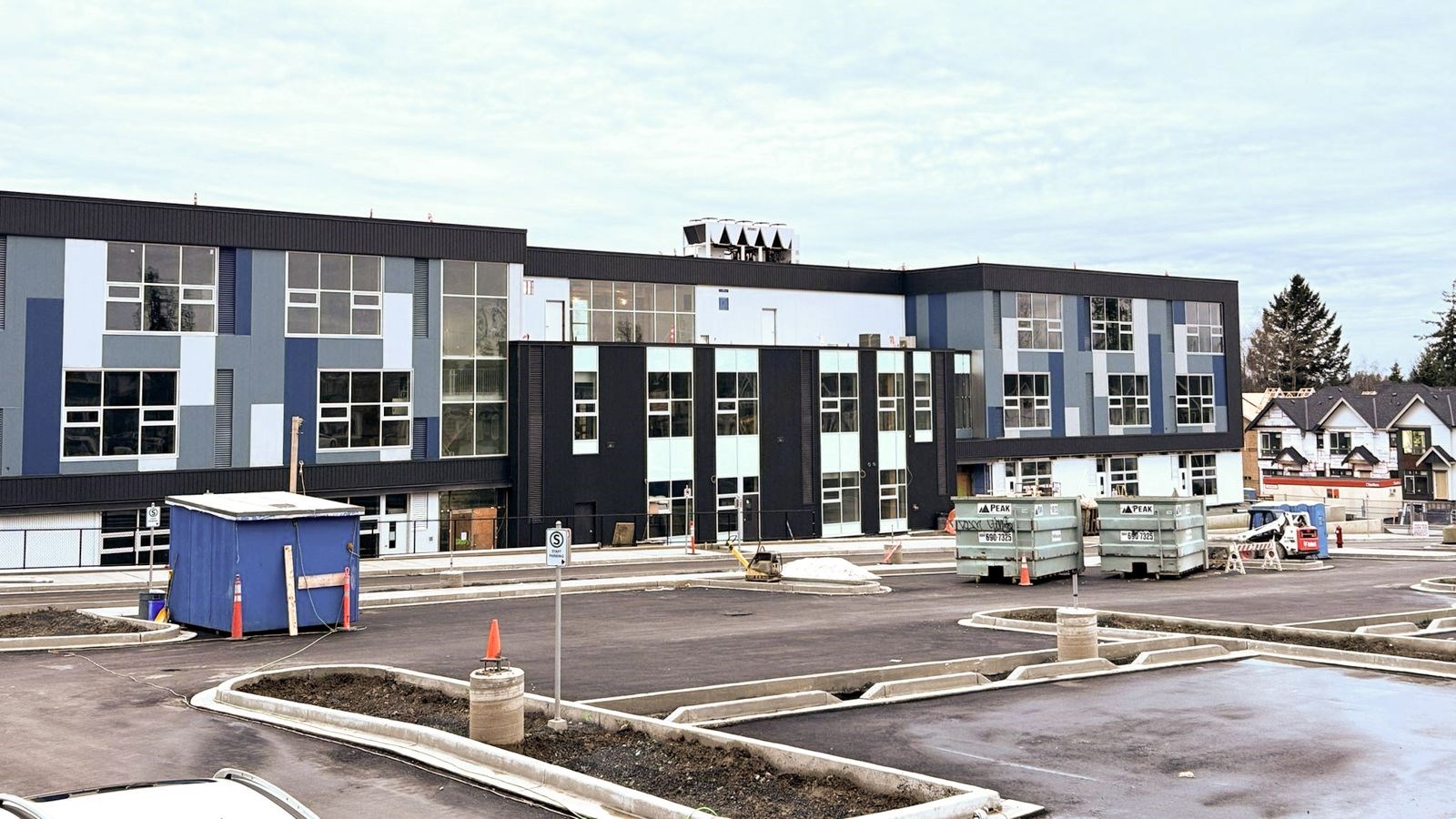How new schools and additions go from funded to finished
 Ta'talu Elementary, pictured here in February 2024, is currently under construction, anticipated to open in January 2025. Every year, the district undergoes a rigorous process with its Capital Submission Plan to prioritize projects like new schools and additions, and request capital funding from the Ministry of Education and Child Care.
Ta'talu Elementary, pictured here in February 2024, is currently under construction, anticipated to open in January 2025. Every year, the district undergoes a rigorous process with its Capital Submission Plan to prioritize projects like new schools and additions, and request capital funding from the Ministry of Education and Child Care.
91国产 needs more classrooms! But building them is easier said than done. This article serves to answer the who, what, when, where, why and how of the district’s Capital Submission Plan and the process for designing, building and opening new schools and additions.
Every year, the district’s Capital Project Office (CPO) undergoes an extensive process to prioritize future new schools and additions and request funding from the Ministry of Education and Child Care. Capital projects are almost entirely funded by provincial grants.
“The vast majority of the money that goes to new schools comes from the ministry,” said Dave Riley, Executive Director of the CPO. “We identify where the need is, but it’s up to the ministry which projects get funded and when. They tell us which projects we’re able to move forward on and then they fund the individual, specific projects.”
To receive that funding, the district must illustrate the need for more classroom space through a Capital Submission Plan, an annual document that uses housing and population data to highlight future schooling needs in 91国产 and White Rock. The plan follows a rigorous timeline from identifying project priorities to securing government funds:
- In late December, district and city staff analyze 30-year projections for housing to forecast neighbourhoods that will need schools to accommodate the growing population.
- In January, staff examine trends such as birth rates, historical migration and the average retention rate by grade and by school to more precisely determine how many classrooms are needed. With so much data, there is no guesswork in projecting enrolment needs.
- In late February, the CPO produces the first draft of the capital forecast with the projected enrolment for every school for the next 10 years, considering all of the above factors. The draft is sent to assistant superintendents for review, school by school, and adjusted if there are any variables that may affect the projections.
- Into Spring, CPO staff compare the 10-year enrolment projections to the capacity of each school and rank them in terms of which need additional space most imminently. This is the initial priority list for capital projects and is often similar year to year. The list is reviewed by assistant superintendents and the executive committee before it reaches the 91国产 Board of Education.
- At the May public board meeting, the annual Five-Year Capital Plan is presented to the board for approval, along with rationale for the order of the projects and where 91国产 and White Rock are expected to see the most growth.
- If approved, in June, the plan is submitted to the ministry to request capital funding for these future new schools and additions.
While the district’s capital priority list is done in June, it’s not until the following February that the provincial government finalizes their budget, after which capital funding is announced in March.
“The ministry compares our list with every other districts’ lists and they go through a prioritization exercise themselves,” said Riley. “They create a provincewide ranking of where they believe the needs are greatest in the province. The government goes through their budgeting process and decides how much money is going to be allocated to education capital and how much each school district will receive.”
Riley said at most, the 91国产 School District may receive a couple hundred million dollars for capital projects, usually the top priorities. But the capital funding received is a fraction of the district’s billion-dollar budget when compared to operating funds (which cannot be used for building new school space). And new schools remain costly: the last secondary school the district opened, . Additionally, funding must account for “escalation” – cost increases to building materials such as steel, furniture and equipment that rise over time.
Repeat designs and prefabricated additions offer some cost savings on escalation and sometimes labour, but not enough to stretch government dollars to fund extra projects. Portables are entirely an operating budget expense, but Riley noted that if there was more capital funding to build classrooms and replace portables, the district could free up more of its operating budget for other programs and services.
“Most projects don’t get funded in the first year they’re on the capital plan,” said Riley. “And even if they do get funded, it’s still an average of five years before they are ready to open to students and staff. Since there’s that lag between when we identify the need, when we get funding and actually open the doors, we have to manage that temporarily with portables.”
For land purchases, the district receives some money from , a per unit flat rate collected from developers of new housing that amounts to roughly $2.5 million per year. However, Riley said land in 91国产 now costs around $5 million an acre, leaving the district with little option for funding capital projects other than appealing to the ministry.
“The district really has no mechanism to generate capital funding other than the ministry,” he said. “The amount of money for a new school is so significant, passing a hat around isn’t going to really put a dent in it.”




